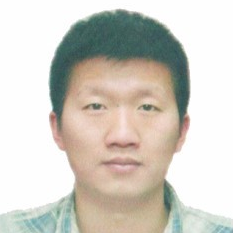Time-Lapse Geophysical Geothermal Reservoir Monitoring and Prediction by Deep Learning
A special issue of Energies (ISSN 1996-1073). This special issue belongs to the section "J: Thermal Management".
Deadline for manuscript submissions: closed (10 April 2023) | Viewed by 8197
Special Issue Editors
Interests: combined near-surface geophysical exploration imaging and geothermal reservoir monitoring
Special Issues, Collections and Topics in MDPI journals
2. Key Laboratory of Applied Geophysics, Ministry of Natural Resources of PRC, Changchun 130026, China
3. Ministry of Land and Resources, Key Laboratory of Applied Geophysics, Jilin University, Changchun 130026, China
Interests: geodetection and information technology
Special Issues, Collections and Topics in MDPI journals
Special Issue Information
Dear Colleagues,
Hot dry rock (HDR) geothermal is considered to be a clean renewable energy source of great developmental value. Geophysical methods, such as low-frequency electromagnetic, gravitational, and seismic, are important technical means in the exploration, development, and monitoring of HDR reservoirs based on the differences of reservoir physics parameters. The conventional geothermal-geophysical methods focus on the reservoir interpretation and evaluation of the HDR target site. This does not provide details about the formation mechanisms of HDR thermal storage and the temporal and spatial variation of the geothermal heat flux, especially for the monitoring of reservoir intrinsic parameters before and after artificial fracturing, such as the extension of fractures in the reservoir, the distribution of fluid migration, and reservoir permeability. Based on the gravitational anomaly, electrical parameters (resistivity, impedance phase), and reservoir velocity changes, we combine different time-lapse geophysical methods to monitor reservoir parameter variations and build a dynamic reservoir model from different scales and different parameters. The machine learning (ML) method is used to organize and classify the time-lapse geophysical data and to correct and calculate the reservoir dynamic model to predict the variation of reservoir intrinsic parameters. In this Special Issue, we would like to present papers on geothermal resource exploration and monitoring for shallow, deep, and HDR structures. We also would like to address geothermal resource/reserve classifications and their mutual relations. We also invite authors specializing in technological novelties of geothermal time-lapse monitoring and prediction. This Special Issue calls for theoretical and empirical papers focusing on the following topics:
- Geothermal reservoir monitoring by geophysics methods;
- Geothermal reservoir prediction by deep learning;
- Geothermal reservoir modeling and simulation;
- Geothermal multi-field coupling.
Prof. Dr. Jing Li
Prof. Dr. Zhaofa Zeng
Guest Editors
Manuscript Submission Information
Manuscripts should be submitted online at www.mdpi.com by registering and logging in to this website. Once you are registered, click here to go to the submission form. Manuscripts can be submitted until the deadline. All submissions that pass pre-check are peer-reviewed. Accepted papers will be published continuously in the journal (as soon as accepted) and will be listed together on the special issue website. Research articles, review articles as well as short communications are invited. For planned papers, a title and short abstract (about 100 words) can be sent to the Editorial Office for announcement on this website.
Submitted manuscripts should not have been published previously, nor be under consideration for publication elsewhere (except conference proceedings papers). All manuscripts are thoroughly refereed through a single-blind peer-review process. A guide for authors and other relevant information for submission of manuscripts is available on the Instructions for Authors page. Energies is an international peer-reviewed open access semimonthly journal published by MDPI.
Please visit the Instructions for Authors page before submitting a manuscript. The Article Processing Charge (APC) for publication in this open access journal is 2600 CHF (Swiss Francs). Submitted papers should be well formatted and use good English. Authors may use MDPI's English editing service prior to publication or during author revisions.
Keywords
In this Special Issue, we would like to present papers on geothermal resource exploration and monitoring for shallow, deep, and HDR structures. We also would like to address geothermal resource/reserve classifications and their mutual relations. We also invite authors specializing in technological novelties of geothermal time-lapse monitoring and prediction. This Special Issue calls for theoretical and empirical papers focusing on the following topics:
- Geothermal reservoir monitoring by geophysics methods;
- Geothermal reservoir prediction by deep learning;
- Geothermal reservoir modeling and simulation;
- Geothermal multi-field coupling.






